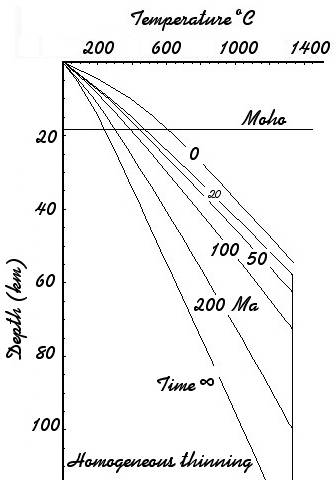| The geotherm in the continental lithosphere |
||||||
 |
||||||
| Lithospheric thinning
Thinning drives heat advection as rock masses, and the heat attached to them, are displaced vertically mainly upward resulting in an instantaneous warming of the geotherm (the geothermal gradient increases). However, it also decreases the thickness of the radiogenic crust therefore reduces the production of radiogenic heat in the lithosphere. Isostasy leads the subsidence of the surface of the lithosphere leading to sedimentation which in turn affects the amount and distribution of the radiogenic heat elements in the crust which also impacts on the geotherm. The interplay between the geometry of the thinning, the thinning rate, and the sedimentation rate lead to contrasted thermal histories. |
||||||